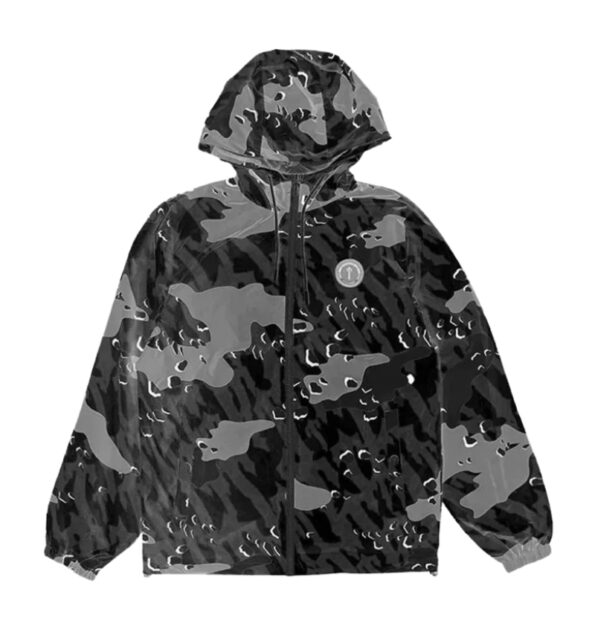The Kurtka Trapstar jacket has become a staple in modern streetwear, beloved for its edgy style and urban appeal. But beyond looks, many buyers wonder: Is the Kurtka Trapstar jacket waterproof or windproof? Understanding its weather protection features can help you decide if it’s the right jacket for your needs.
In this article, we’ll break down the differences between waterproof and windproof jackets, explore the materials used in Kurtka Trapstar jackets, and explain how well they perform against wind and rain.
Understanding Waterproof vs. Windproof Jackets
Before diving into the specifics, it’s important to understand what “waterproof” and “windproof” actually mean.
- Waterproof jackets are designed to keep all water out, even in heavy rain. They use special membranes or coatings that prevent water from penetrating, while often allowing sweat vapor to escape. These jackets are commonly used for hiking or extreme weather.
- Windproof jackets block wind from passing through the fabric, which helps maintain warmth by preventing cold air from chilling your body. Some jackets are windproof but not fully waterproof, meaning they resist wind well but may only repel light rain.
Both features are essential for outdoor wear, but many urban streetwear jackets prioritize wind resistance and moderate water resistance over full waterproofing.
Are Kurtka Trapstar Jackets Waterproof?
Most Kurtka Trapstar jackets are water-resistant, not fully waterproof.
- The jackets typically use durable fabrics like polyester or nylon treated with water-repellent coatings. This means they can handle light rain or drizzle without soaking through immediately.
- However, in heavy rain or prolonged exposure, these jackets may allow water to penetrate since they lack fully sealed seams and specialized waterproof membranes found in technical rainwear.
- For everyday urban use, where you might encounter light rain or splashes, Kurtka Trapstar jackets offer adequate protection. They’re designed more for style and moderate weather resilience than for outdoor adventures.
Are Kurtka Trapstar Jackets Windproof?
When it comes to windproofing, Kurtka Trapstar jackets generally perform very well.
- The fabrics are tightly woven to block wind, helping to reduce wind chill effectively. This is especially useful in cold urban environments.
- Many models include additional insulation or padded linings that enhance warmth while shielding from gusty conditions.
- Features like high collars, adjustable hoods, and storm flaps on zippers improve their windproof capabilities.
Overall, the jackets offer solid protection from chilly winds, making them great for fall and winter streetwear.
Product Features That Enhance Protection
Several design elements in Kurtka Trapstar jackets contribute to their weather resistance:
- Hoods: Often adjustable or detachable, providing extra protection for your head during wind or rain.
- High collars and storm flaps: Help block wind from entering around the neck and zipper areas.
- Zippers and seams: While not always fully sealed like technical rain jackets, the zippers are sturdy and sometimes covered with fabric flaps to reduce water ingress.
- Material layering: Some models have padded or quilted interiors that trap heat and block wind effectively.
These features combine to offer a balance between weather protection and fashion-forward design.
Different Models and Weather Protection Levels
Kurtka Trapstar offers several jacket styles with varying levels of weather protection:
- Puffer jackets: Heavily insulated, very windproof, and moderately water-resistant. Best for cold, dry conditions or light rain.
- Bomber jackets: Lightweight, stylish, and wind-resistant but less water-resistant. Suitable for mild weather.
- Parkas: Often longer with more insulation and weatherproof features, offering better protection in colder, wetter climates.
Choosing the right model depends on your local climate and how much protection you need.
How to Care for Your Jacket to Preserve Weather Resistance
To maintain your Kurtka Trapstar jacket’s water and wind resistance:
- Wash carefully: Use mild detergents and avoid fabric softeners that can strip water-repellent coatings.
- Dry properly: Follow care labels; some jackets benefit from low heat drying to reactivate water repellency.
- Reproof if needed: Over time, water resistance fades. Use spray-on or wash-in water repellent treatments to restore performance.
- Store correctly: Keep your jacket in a cool, dry place to avoid damage to coatings or insulation.
Conclusion
So, is the Kurtka Trapstar jacket waterproof or windproof? The answer is:
- Most Kurtka Trapstar jackets are water-resistant, not fully waterproof. They can handle light rain but aren’t designed for heavy downpours.
- They are generally windproof, with tightly woven fabrics and features that block cold winds effectively.
These jackets excel as stylish, urban outerwear that protects you in moderate weather conditions while keeping you looking sharp.
If you need full waterproof gear for heavy rain or outdoor activities, consider specialized rain jackets instead. But for everyday streetwear, the Kurtka Trapstar jacket strikes a great balance of style, comfort, and weather resistance.
FAQs
Can I wear a Kurtka Trapstar jacket in the rain?
Yes, it’s suitable for light rain or drizzle, but avoid heavy rain as the water resistance is limited.
Is the jacket good for snow or extreme weather?
It’s best for mild to moderate cold and wind. For extreme weather, look for jackets with specialized insulation and waterproofing.
How do I choose the right model for weather protection?
Puffer jackets offer more warmth and wind protection, while bombers are lighter and less weather-resistant. Parkas provide the best coverage among Trapstar styles.

